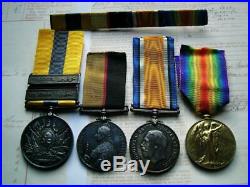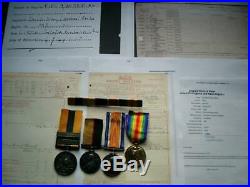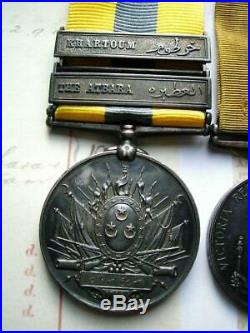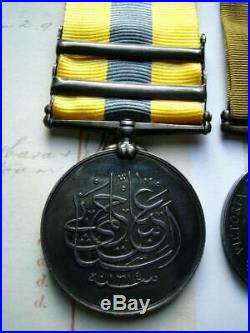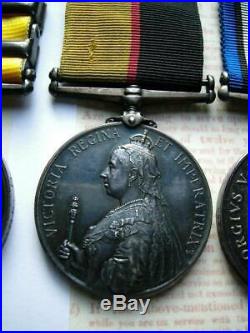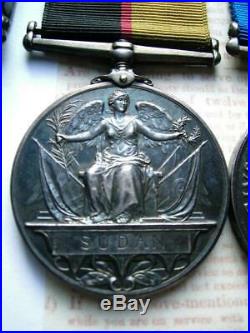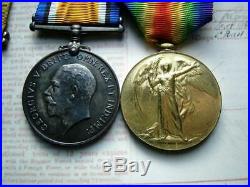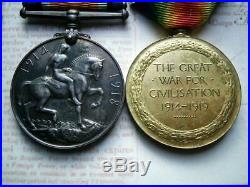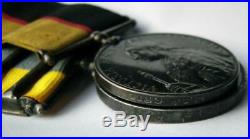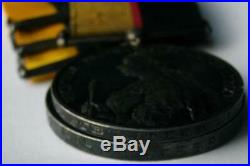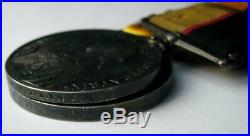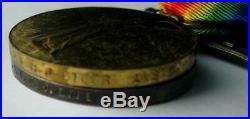Posts tagged queen
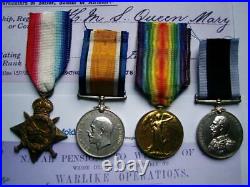
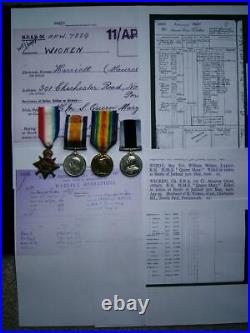
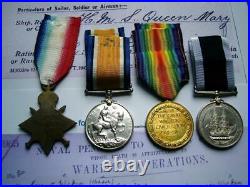
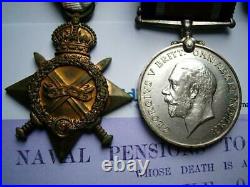
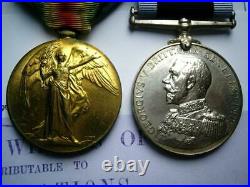
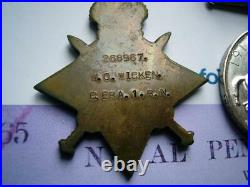
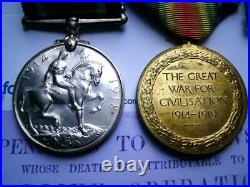
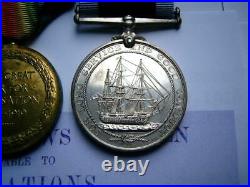
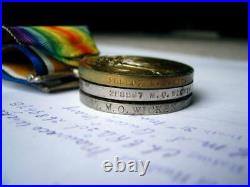
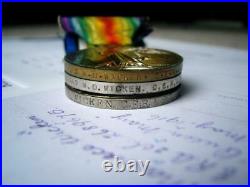
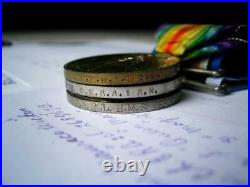
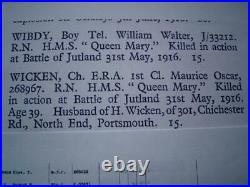
Maurice Oscar Wicken was born in Southwark, London, on 16 January 1876 and joined the Royal Navy as an Acting Engine Room Artificer Fourth Class on 18 February 1897. Advanced Chief Engine Room Artificer Second Class on 11 June 1910, he was awarded his Long Service and Good Conduct Medal on 23 February 1913, and joined H. Queen Mary on 4 September 1913. He served from the outbreak of the Great War in Queen Mary, and was promoted Chief Engine Room Artificer First Class on 11 June 1915. He was present at the Battle of Jutland, 31 May 1916, when, under the command of Captain C. Prowse, Queen Mary engaged the German ships SMS Seydlitz and SMS Derfflinger during the opening phase of the Battle. She was sunk with the loss of 1,266 crew and only 18 survivors. Wicken was amongst those killed, and he is commemorated on the Portsmouth Naval Memorial. KIA Jutland casualty WW1 medal group HMS Queen Mary Battleship CERA M Wicken RN. Jutland WW1 Great War HMS Queen Mary casualty medal group CERA Wicken RN Jutland casualty group of four, Chief Engine Room Artificer First Class Maurice Oscar Wicken of HMS Queen Mary, 1914-15 Star official impressed 268967, M. “; British War and Victory Medals “268967M. All official impressed, IMO extremely fine, comes with copy medal roll and some history, see pictures for condition Maurice Oscar Wicken was born in Southwark, London, on 16 January 1876 and joined the Royal Navy as an Acting Engine Room Artificer Fourth Class on 18 February 1897. HMS Queen Mary – Battlecruiser HMS Queen Mary was the last battlecruiser built by the Royal Navy before the First World War. The sole member of her class, Queen Mary shared many features with the Lion-class battlecruisers, including her eight 13.5-inch (343 mm) guns. She was completed in 1913 and participated in the Battle of Heligoland Bight as part of the Grand Fleet in 1914. As part of the 1st Battlecruiser Squadron, Queen Mary attempted to intercept a German force that bombarded the North Sea coast of England in December 1914, but was unsuccessful. BATTLE OF JUTLAND 1916. In an attempt to lure out and destroy a portion of the Grand Fleet, the High Seas Fleet, composed of 16 dreadnoughts, 6 pre-dreadnoughts, and supporting ships, departed the Jade Bight early on the morning of 31 May. The fleet sailed in concert with Rear Admiral Franz von Hipper’s 5 battlecruisers. The Royal Navy’s Room 40 had intercepted and decrypted German radio traffic containing plans of the operation. In response the Admiralty ordered the Grand Fleet, totalling some 28 dreadnoughts and 9 battlecruisers, to sortie the night before to cut off and destroy the High Seas Fleet. HMS Queen Mary exploded during battle The Germans opened fire first at 15:48, followed by the British. The British ships were still in the process of making their turn, as only the two leading ships Lion and Princess Royal had steadied on their course when the Germans opened fire. The German fire was accurate from the beginning, but the British overestimated the range, as the German ships blended into the haze. Queen Mary opened fire about 15:50 on SMS Seydlitz, using only her forward turrets. By 15:54, the range was down to 12,900 yards (11,800 m), and Beatty ordered a course change two points to starboard to open up the range at 15:57. During this period, Queen Mary made two hits on Seydlitz, at 15:55 and 15:57, one of which caused a propellant fire that burnt out her aft superfiring turret. The range had grown too far for accurate shooting, so Beatty altered course four points to port to close the range again between 16:12 and 16:15. This manoeuvre exposed Lion to the fire of the German battlecruisers, and she was hit several times. Queen Mary hit Seydlitz again at 16:17 and knocked out one gun of her secondary armament. In return, Queen Mary had been hit twice by Seydlitz before 16:21 with unknown effects, but the German battlecruiser hit the turret face of’Q’ turret at that time and knocked out the right-hand gun in the turret. By 16:25, the range was down to 14,400 yards (13,200 m), and Beatty turned two points to starboard to open the range again. This move came too late for Queen Mary, however, as Derfflinger’s fire began to take effect, hitting her twice before 16:26. Stationed inside’Q’ turret, Midshipman Jocelyn Storey survived and reported that there had been a large explosion forward which rocked the turret, breaking the left gun in half, the gun breech falling into the working chamber and the right gun coming off its trunnions. Cordite in the working chamber caught fire and produced poisonous fumes that asphyxiated some of the turret’s crew. It is doubtful that an explosion forward could have done this, so’Q’ turret may have been struck by the second shell. Tiger, the battlecruiser behind her, was showered with debris from the explosion and forced to steer to port to avoid her remains. 1,266 crewmen were lost; eighteen survivors were picked up by the destroyers Laurel, Petard, and Tipperary, and two by the Germans. Auctiva gets you noticed! Track Page Views With. Auctiva’s FREE Counter. The item “KIA Jutland casualty WW1 medal group HMS Queen Mary Battleship CERA M Wicken RN” is in sale since Saturday, November 13, 2021. This item is in the category “Collectables\Militaria\World War I (1914-1918)\Other World War I Militaria”. The seller is “theonlineauctionsale” and is located in England. This item can be shipped worldwide.
- Country/Region of Manufacture: United Kingdom
- Country/ Organization: Great Britain
- Issued/ Not-Issued: Issued
- Theme: Militaria
- Type: Medals & Ribbons
- Conflict: World War I (1914-1918)
- Service: Navy
- Era: 1914-1945
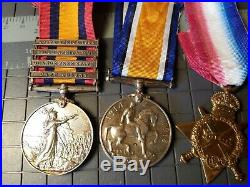
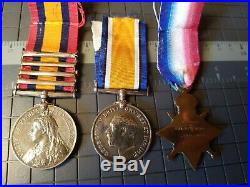
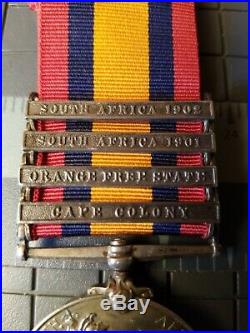
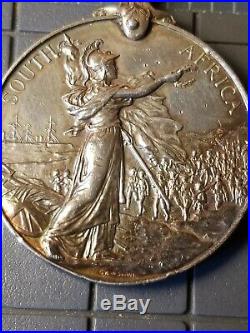
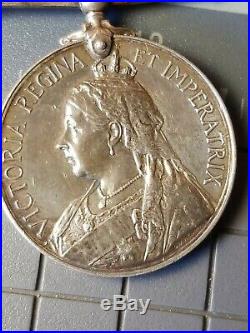
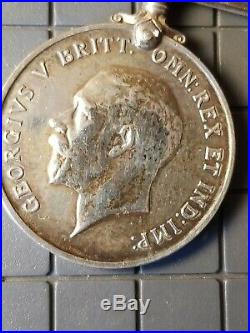
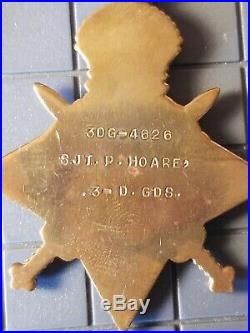
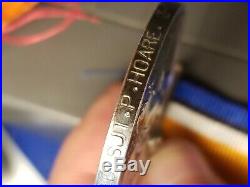
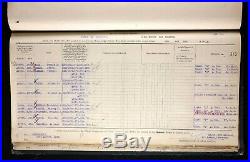
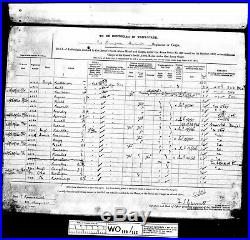
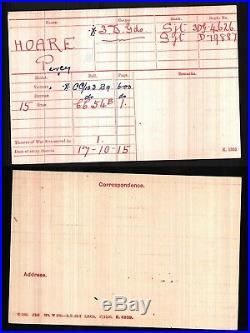
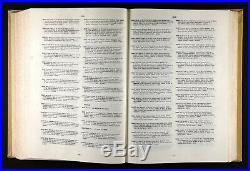
PLEASE FOLLOW OUR E BAY STORE. SALE SEE OUR STORE. PLEASE READ WHOLE ADD. ALL 3 MEDALS FROM SAME SOLIDER BOER WAR –WW1-PERFECT. NAME ON SOUTH AFRICA MEDAL #4626 PTE P. HOARE 3rd DRAGON GDS. MEDAL HAS 4 CLASP. NAME ON WAR MEDAL. 3DG – 4626 SJT. NAME ON 1914-15 STAR. Below is information provided by military medals historian. Anyway, I have attached his QSA roll which verifies all 4 bars (which is unusual to see the SA 01 & SA 02 without a KSA), it gives his date of arrival in France in 1915 on the MIC (Medal Index Card) and then there is the roll for the British War Medal & Victory Medal (location of the last one unknown). The item “QUEEN VICTORIA SOUTH AFRICA BOER WAR MEDAL+WAR MEDAL +WW1 STAR SAME SOLIDER” is in sale since Monday, May 11, 2020. This item is in the category “Collectibles\Militaria\WW I (1914-18)\Original Period Items\Great Britain\Medals, Pins & Ribbons”. The seller is “bigjeffnola” and is located in Madisonville, Louisiana. This item can be shipped worldwide.
- Country/Region of Manufacture: United Kingdom
- Type: Medal
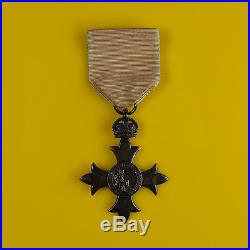
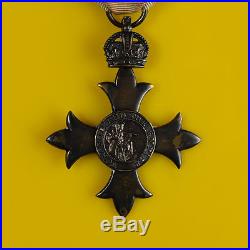
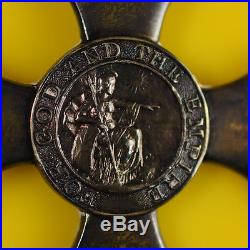
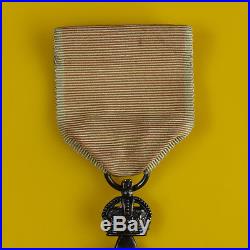
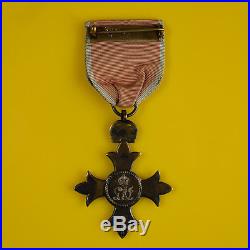
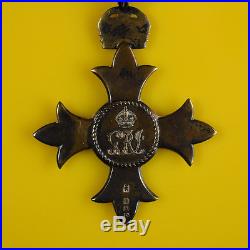
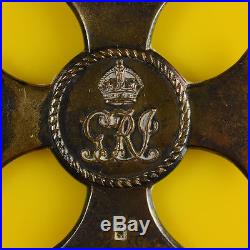
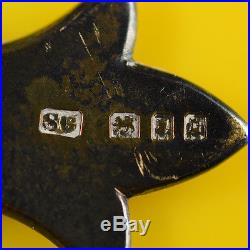
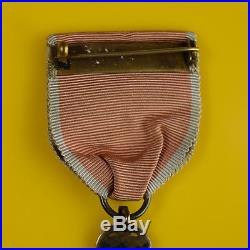
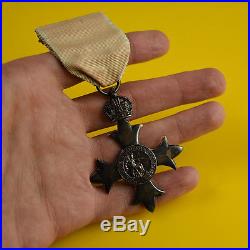
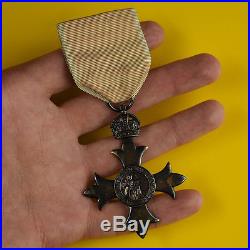
For God and The Queen. Hallmarked with date letter’c’ for 1918. Full sized original medal measuring 6cm x 5cm (just the metal). The ribbon is original and made from silk and is in fine vintage condition. It dates to the era c. The medal has never been polished and has been under. For at least fifty years (for this we are aware of). It is made with sterling silver and weighs 23grams. Side note ; this is a private listing to protect your on-line identity. The item “Rare Authentic GOD AND THE QUEEN Sterling Silver World War One Military Medal” is in sale since Thursday, July 28, 2016. This item is in the category “Collectables\Militaria\1914 – 1918 (WWI)”. The seller is “australian_antiques” and is located in Adelaide. This item can be shipped worldwide.
- Authenticity: Original
- Country: Australian or English
- Product Type: Medals
- Era: 1910s
